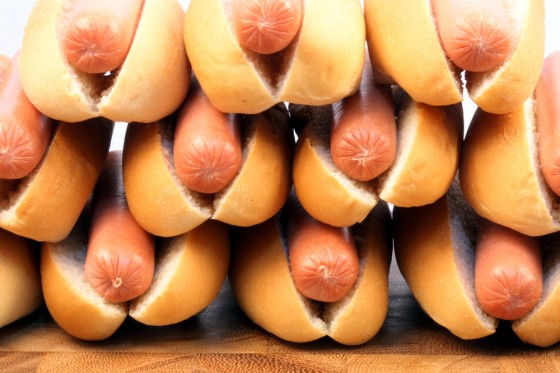 If you have ever purchased a hot dog from a street vendor, you have probably wondered (most likely after the first bite), “Is this going to make me sick?” But thanks to a number of new advances, from genome sequencing to data analysis of supply chains, food safety agencies around the world are developing more accurate methods for lowering the risk factors in the foods we eat. Another method that is gaining popularity is the use of Monte Carlo simulation (MCS), a computerized mathematical technique that accounts for risk in quantitative analysis and decision making.
If you have ever purchased a hot dog from a street vendor, you have probably wondered (most likely after the first bite), “Is this going to make me sick?” But thanks to a number of new advances, from genome sequencing to data analysis of supply chains, food safety agencies around the world are developing more accurate methods for lowering the risk factors in the foods we eat. Another method that is gaining popularity is the use of Monte Carlo simulation (MCS), a computerized mathematical technique that accounts for risk in quantitative analysis and decision making.
By inputting risk factors and running thousands of simulations, a realistic portrait of risk factors and the probabilities that those risks may occur can be developed, decreasing the likelihood of food-borne illnesses.
For example, to combat the seemingly endless risks in the “farm-to-table” pathway, the U.S. Food and Drug Administration launched an interactive web-based tool called iRISK. The tool, which is free to use, utilizes Monte Carlo simulation to analyze potential food contamination risk based on a number of factors:
- Type of food(s)
- Hazard(s)
- Demographic of concern
- Production/processing system of food
- Consumption patterns
- Dose response
- How health impact is to be calculated
Food industry risk analysts can simulate real-life scenarios by inputting multiple food types and potential hazards in a single assessment. Additionally, hazards can be ranked by level of risk.
After providing the appropriate data, iRISK quickly generates reports that offer estimated risks from multiple microbial or chemical food safety hazards and estimates how scenario alterations can increase or lower contamination risk. Since its launch, iRisk has attracted more than 500 registered users.
In China, the Shanghai Food and Drug Administration also relies on Monte Carlo simulation to assess food safety, and one of its most notable uses of the technology occurred in the months prior to Shanghai’s hosting of the 41st World Expo in May 2010. Organizers wanted to be certain that food distributed to foreign visitors was safe, so it initiated a quantitative analysis of nitrite contamination in cooked meat. The Shanghai FDA conducted 370 random checks of meat products in the city and found four percent of samples exceeded nitrite standards.
On the basis of this initial data, the organization commissioned a report to determine the probability of consuming nitrites in excess of established standards in normal consumption habits. Then, using MCS, the researchers simulated the sample 10,000 times, multiplying variables to fit possible real-life situations. The findings indicated that the possibility of passing the threshold for acute nitrite poisoning indeed existed, as well as the possibility for exceeding the allowable daily intake of nitrite. Based on the results, the Shanghai FDA proposed that businesses in the food service industry be forbidden from using nitrite, which eliminated the possibility of nitrite poisoning at its root.
It is interesting—if not a little disconcerting—to consider the guesswork previously employed in food safety prior to technological advances such as Monte Carlo simulation. While risk can never be completely eliminated, we can at least dine with less concern when analysts are armed with solutions that dramatically lower risk.

I like your article